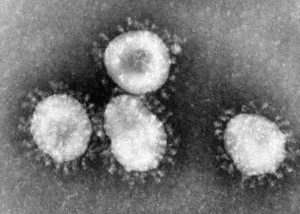Today, the Minnesota Department of Education (MDE) and the Minnesota Department of Health (MDH) released guidance to help Minnesota’s public schools plan for the 2020-21 school year.
“As we look ahead to the next school year, the health and safety of our students will continue to be our number one priority,” said Minnesota Department of Education Deputy Commissioner Heather Mueller. This spring brought about unprecedented changes to our society and our education system, and moving forward we must do everything we can to meet the needs of each and every student. The proactive planning that our school districts and charter schools will do this summer will ensure that our school communities are prepared for whatever this school year brings.”
“We are learning more about COVID-19 every day, but we still can’t be sure about exactly how the pandemic will play out over the coming months,” Commissioner of Health Jan Malcolm said. “Until a vaccine is developed COVID-19 is likely to remain a serious concern, and we must be prepared for a variety of scenarios. We appreciate the partnership of the Minnesota Department of Education and the state’s school systems as we prepare for the start of school this fall.”
School and district administrators are directed to develop three contingency plans to prepare for the 2020-21 school year using the three scenarios described below:
- Scenario 1: In-person learning for all students. In this planning scenario, schools should create as much space between students and teachers as is feasible during the day, but will not be held strictly to enforcing 6 feet of social distancing during primary instructional time in the classroom. Activities and extracurricular programming should continue to follow the Guidance for Social Distancing in Youth Sports (PDF) (www.health.state.mn.us/diseases/coronavirus/schools/youthsports.pdf). This scenario may be implemented if state COVID-19 metrics continue to stabilize and/or improve. All requirements in this guidance apply to scenario 1.
- Scenario 2: Hybrid model with strict social distancing and capacity limits. In this planning scenario, schools must limit the overall number of people in school facilities and on transportation vehicles to 50% maximum occupancy. Sufficient social distancing with at least 6 feet between people must occur at all times. If distancing cannot be achieved in a space or on a transportation vehicle, the number of occupants must be reduced. Schools must also include plans for contactless pick-up and/or delivery of meals and school materials for days that students and staff are not in the school building, as well as the implementation of a school-age care program for critical workers. This scenario may be implemented if COVID-19 metrics worsen at the local, regional, or statewide level. Scenario
 2 may also be implemented within a school if they experience clusters of cases within a classroom or the school. All requirements in this guidance apply to scenario 2, with additional requirements noted in the Social Distancing and Minimizing Exposure section noted for scenario 2 only.
2 may also be implemented within a school if they experience clusters of cases within a classroom or the school. All requirements in this guidance apply to scenario 2, with additional requirements noted in the Social Distancing and Minimizing Exposure section noted for scenario 2 only. - Scenario 3: Distance learning only. This scenario may be implemented if local, regional, or statewide COVID-19 metrics worsen significantly enough to require the suspension of in-person learning. The requirements in this guidance regarding in-person protections would not apply to the general school community, as students and staff would be utilizing distance learning and would not be gathering in groups on school grounds. However, schools may be open to provide emergency child care or other functions. Governor Walz’s Office, in consultation with the Minnesota Department of Health (MDH) and Minnesota Department of Education (MDE), will determine and announce the scenario model under which schools may reopen for the 2020-21 school year based on state COVID19 metrics by the week of July 27. Future decisions to increase or loosen restrictions will be made if COVID-19 metrics at the local, regional, or state level worsen or improve. Schools may choose to implement strategies that are more restrictive than the scenario established by the state, but may not choose to implement plans for a scenario that is less restrictive.
State officials acknowledged that all three scenarios could play out statewide. Areas in Minnesota where COVID 19 has been less prevalent – including Wright County and Sherburne County – could utilize Scenarios 1 and 2. In Hennepin or Ramsey counties, however, Scenario 2 or 3 might be more likely as students head back to school.
Much will depend, they said, on numbers and trends throughout the summer.